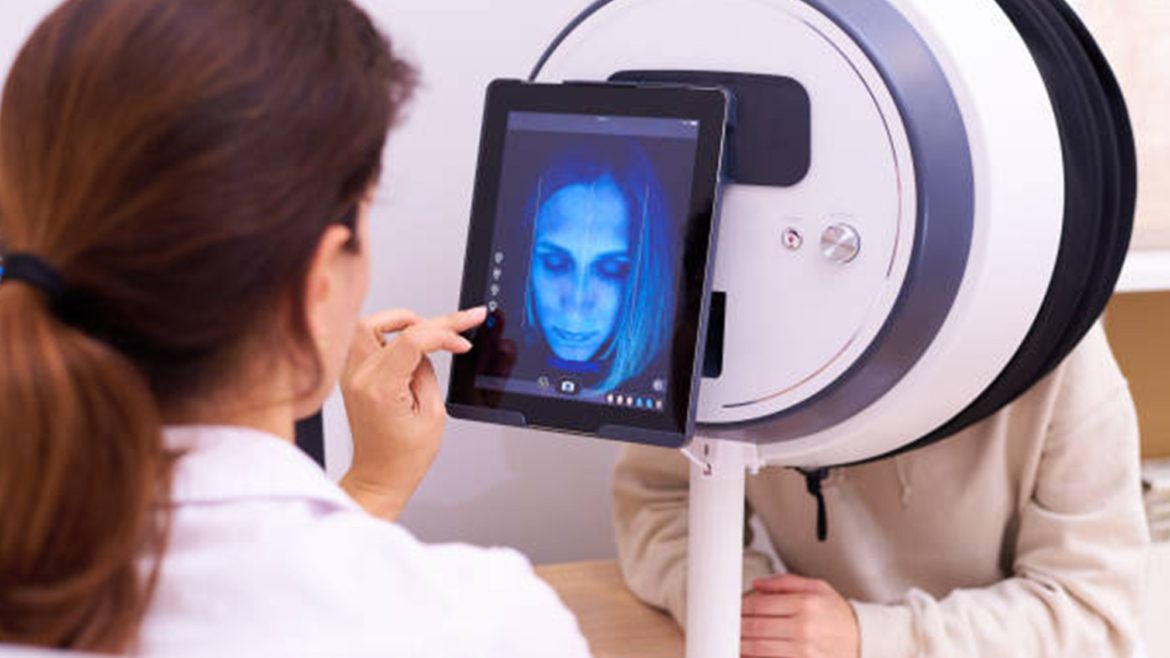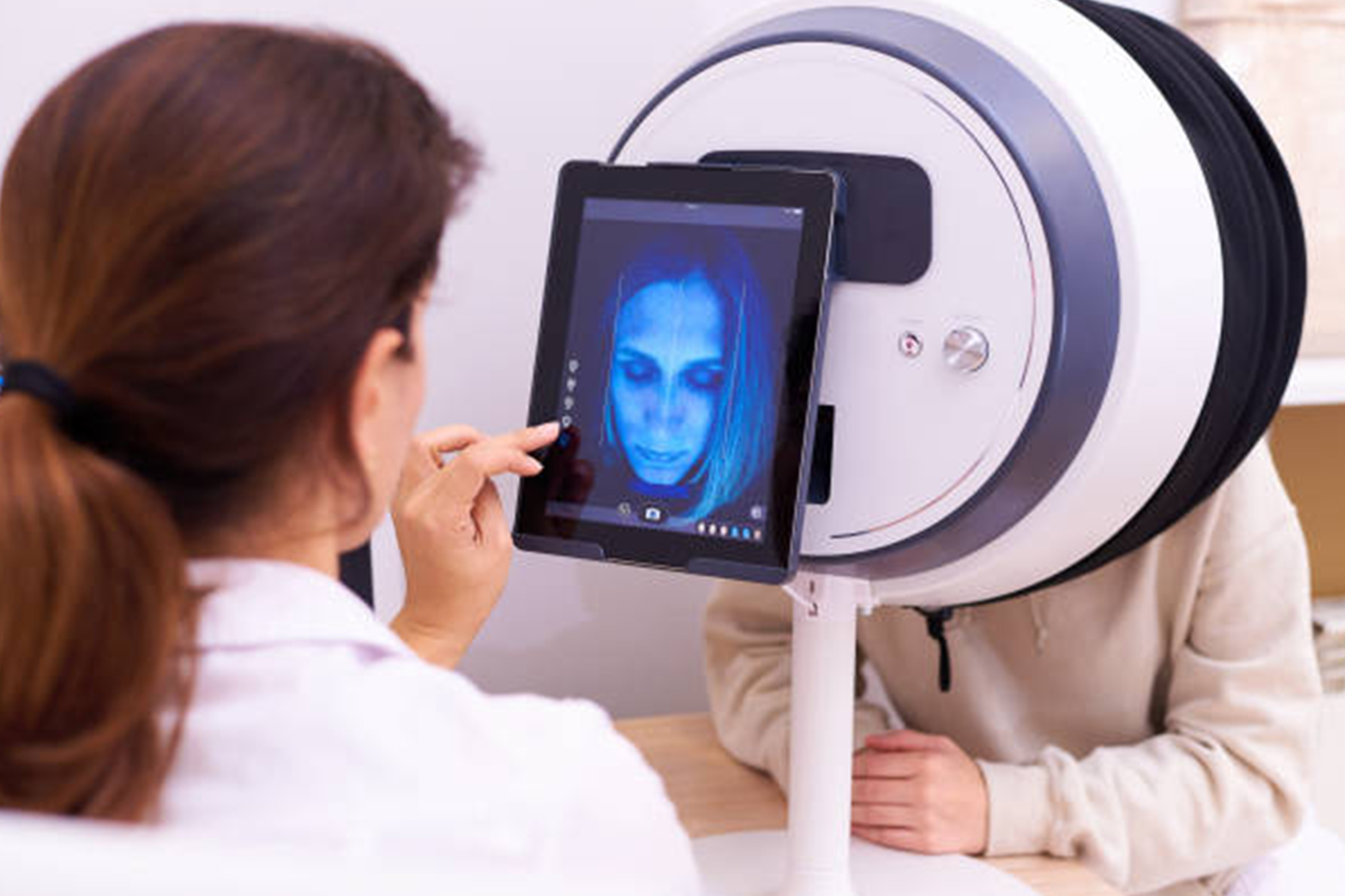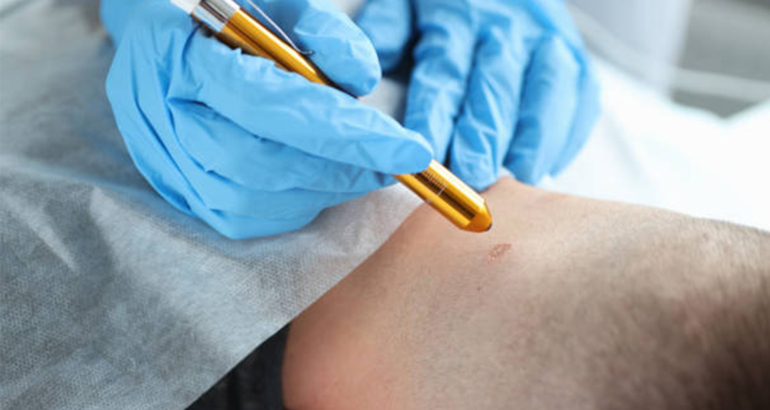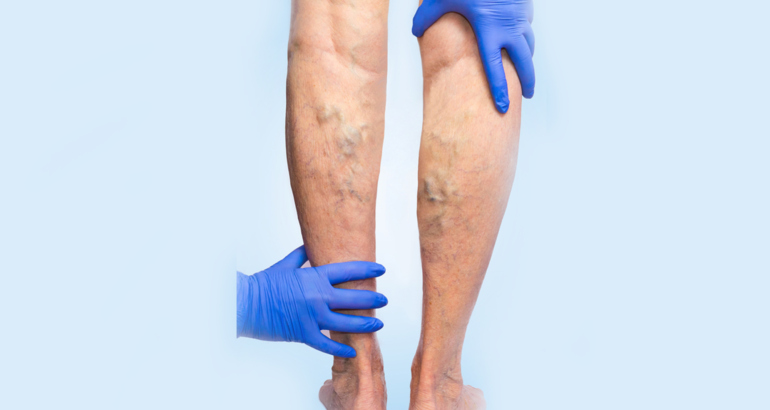Skin Consult
We do a 15-minute skin consultation to improve your skin profile, identify the elements that can be improved visually, and create a treatment plan tailored to your needs. This skin consult is performed by one of our licensed medical estheticians.
We’d want you to complete a quick questionnaire about your lifestyle, health issues, medications, past treatments, and your current skincare routine.
What are the common questions discussed during facial analysis and skin consult?
- Any skin-related issues
- The Esthetician talk about your skin’s intrinsic features, which are tied to heredity;
- The Esthetician will also discuss your skin’s extrinsic characteristics related to lifestyle and other factors.
- The Esthetician will also review lifestyle behaviors like exercise, stress, sun exposure, smoking, etc.
- Your skin type will be determined, and they will ask you about your opinion of your skin and provide feedback following your facial examination.
- Nutrition and hydration will also be discussed, including water and coffee consumption, special diets, and nutritional supplementation.
- The Esthetician must know about any previous cosmetic procedures and your responses. They’ll also need to know when they were last performed and the outcome.
- Any past treatment-related risks, such as allergies, sensitivities, previous responses, medication combinations, lifestyle, and so on
- Your medical history, including any serious ailments you may have, surgeries, allergies, prescription drugs, and so on, will be discussed.
What is involved in facial analysis and skin consult?
What is your recommended skincare routine?
The importance of using the products in the correct order cannot be overstated. We recommend using one skincare like ZO skincare or Defenage for daily skin care.
- Wash your face first. Rinse your face with water every morning and night, then rub a tiny amount of gentle cleanser between your clean palms. If you use makeup at night, you may need to cleanse twice. Cleanse your face with cleansing oil or micellar water first.
- Instead of rubbing your eyes, try keeping dedicated eye-makeup removers on for a few minutes to help the makeup come off more readily. After that, use a light cleanser to cleanse your entire face.
- Use a toner. If you’re going to use toner, do it after you’ve cleansed your face and before you do anything else. Using your palms or a cotton pad, gently swipe a few drops of toner onto your face. Use only at night if your toner exfoliates, eliminating dead skin cells with chemicals like glycolic acid. Using hydrating formulations twice a day is recommended. Exfoliating toner with retinoids or other exfoliants should not be used simultaneously.
- Use a serum. Antioxidant serums, such as a brightening vitamin C serum, are especially beneficial in the morning because they protect your skin from the free radicals you’ll encounter throughout the day. Use a hyaluronic acid-based moisturizing serum at night to prevent your skin from drying out, especially if you’re using anti-aging or acne treatments that might irritate and dry your skin. Exfoliants like alpha-hydroxy acids (AHA) and lactic acid can be found in serums. Always remember, no matter what you’re doing: Water-based serums should be applied before moisturizer, whereas oil-based serums should be applied after.
- Apply eye cream: Eye creams do not include any preservatives. You can use any moisturizer on your under-eye area. Still, if you want to use a specific eye cream, you should layer it underneath moisturizer because eye creams are often thinner than face moisturizers. To reduce puffiness in the morning, use an eye cream with a metal roller-ball applicator and keep it in the freezer. Using a moisturizing eye moisturizer at night might induce fluid retention, making your eyes puffy in the morning.
- Apply spot therapy to certain areas. When your body is in repair mode, it’s a good idea to utilize acne spot treatments at night. Layering acne-fighting chemicals like benzoyl peroxide or salicylic acids with retinol might irritate. Instead, do everything possible to keep your skin hydrated and calm.
- Use a day cream to moisturize and protect your skin, and a night cream to heal and rejuvenate it. Moisturizer moisturizes the skin while locking in all other products you’ve used. For the morning, look for a light lotion with an SPF of 30 or higher. You can use a heavier night cream in the evening. Those with dry skin should apply a lotion every morning and night.
Retinoids (vitamin A derivatives, such as retinol) should be used in the following ways: They increase skin-cell turnover, which helps to minimize dark spots, breakouts, and fine wrinkles, but they can also irritate sensitive skin. If you use retinoids, remember that they degrade in the sun, so only use them at night. They also increase your skin’s sensitivity to the sun; hence sunscreen is a must.
- Use facial oil. If you use a facial oil, apply it after you’ve applied your other skin-care products because nothing else will penetrate the oil.
- Put on some sunblock. It’s the final but most crucial step. Skin cancer and indications of aging can be avoided by protecting your skin from UV radiation. Even if your moisturizer doesn’t have SPF, you should still use sunscreen. To ensure that chemical sunscreens are effective, wait 20 minutes before going outside. Look for sunscreen with a broad-spectrum SPF, protecting you from UVA and UVB rays.
Inorganic (mistakenly referred to as ‘physical’) sunscreens (i.e., zinc oxide and titanium dioxide) and organic (sometimes erroneously referred to as ‘chemical’) sunscreens are the two types of sunscreens.
The sun protection factor (SPF rating) measures how much sunburn-causing UV radiation penetrates the skin. It was first developed in 1974. For example, if sunscreen is applied evenly at a thick dosage of 2 milligrams per square centimeter (mg/cm2), 15 percent of the scorching radiation will reach the skin. It’s crucial to remember that higher SPF sunscreens don’t last as long or as well on the skin as lower SPF sunscreens and must be reapplied as prescribed, usually every two hours.
Because ultraviolet type A (UVA, wavelengths 315–400 or 320–400 nm), does not induce reddening or skin malignant melanomas but causes unseen damage and skin malignant melanomas, the SPF is an imperfect indicator of skin damage. Compared to the nominal SPF, conventional sunscreen blocks very little UVA radiation; broad-spectrum sunscreens are designed to protect against UVB and UVA radiation.
What is the persistent pigment darkening method?
The persistent pigment darkening (PPD) method, comparable to the SPF method of assessing sunburn protection, measures UVA protection. It was invented in Japan and is now the favored procedure of businesses like L’Oréal.
The PPD method, rather than assessing erythema, employs UVA radiation to create a persistent darkening or tanning of the skin. A sunscreen with a PPD rating of 10 should theoretically expose a person to 10 times as much UVA as they would be without protection.
Who performs the skin consult?
Our licensed Esthetician performs the skin consultation. This service can be complementary if you purchase one facial service like Hydrodermabrasion facial or microdermabrasion.
Where can I get the list of all Medical Spa services offered in your clinic?
You can view all the Medical Spa services on this page
Where can I get the prices and book online?
You can use this page to check the process and book online.




